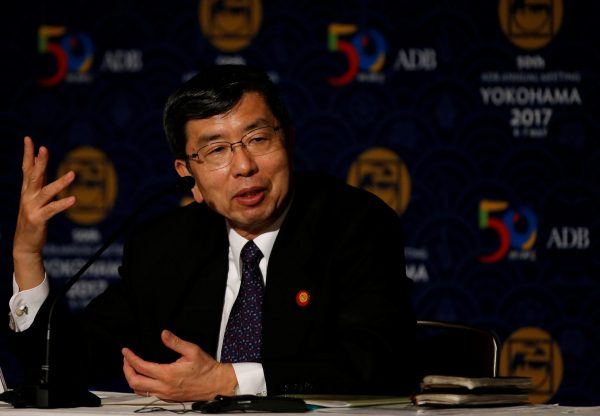The earliest priorities for the ADB in Indonesia were in agriculture. In 1969, a loan for the Tajum Irrigation Project in Central Java was approved. The Tajum project loan was a first in many ways for the ADB — it was the first ADB loan for agricultural infrastructure, the first loan to Indonesia and the first ADB loan financed from the Bank’s low-interest Special Funds.
During the 1970s, the emphasis on pembangunan (development) guided overall economic policy in Indonesia. The first international oil boom in 1973–74 brought a large windfall gain. The government was able to expand development spending rapidly. The ADB, along with other donors, implemented numerous activities to support irrigation, rural infrastructure and the expansion of fertiliser production. At the time, the Green Revolution in agricultural technology was arriving in Indonesia. It took time to promote the new technology but by the early 1980s, rice production had begun to expand rapidly.
But no sooner was there success in bolstering food security than a new challenge arose. International oil prices began to fall in the early 1980s, ushering in an era of difficult budgetary restraint in Indonesia. A series of economic reform packages were needed.
The emphasis on policy reform in the 1980s meant that Indonesia needed access to new types of international loans. Formerly, most ADB loans had been approved for specific projects. Now, loans began to be provided to support a wider range of government activities including structural reform measures.
In 1992 there was a marked change in arrangements for Indonesia’s relations with the international donor community. Following a period of increased criticism of Indonesia, especially from the Netherlands, the Indonesian government announced that it wanted the Inter-Governmental Group on Indonesia, the international aid coordination committee which had existed since the late 1960s, to be abolished. Indonesia suggested that a new World Bank coordination committee — the Consultative Group on Indonesia — be established. The ADB became a member of the new Consultative Group on Indonesia and actively supported its work.
In 1997, the Asian financial crisis brought turmoil to financial markets in Southeast Asia. In response, the ADB joined with the international community to provide support to Indonesia. The Bank joined with other international partners in an IMF-led US$23 billion package announced in Tokyo in October 1997. As the crisis worsened, the Bank designed a range of additional loans tailored to meet Indonesia’s needs.
One serious consequence of the crisis was that investment in public infrastructure in Indonesia collapsed, slumping from around US$16 billion in 1996 to US$1.5 billion in 2002. The ADB took opportunities to strengthen efforts to restore investment in infrastructure. But in view of the Indonesian government’s policy of cutting back on international borrowings, it was not easy to design new programs.
Another major test was the Boxing Day tsunami disaster in 2004 which devastated Banda Aceh in North Sumatra. Almost 170,000 Indonesians were swept away as well as around 60,000 people in other nearby countries. The ADB joined the international efforts to provide support to Indonesia and other countries and established the Asian Tsunami Fund of approximately US$580 million.
In 2007–2008, 10 years after the Asian financial crisis, the Global financial crisis posed challenges for Indonesia and other countries in Asia. In response to the uncertainties in financial markets, the ADB approved special Counter Support Facility loans to provide fast-disbursing assistance to address liquidity problems. During 2009, Indonesia received over US$2.1 billion of financing from the ADB.
Indonesia’s approach to international economic diplomacy has been evolving as well. In 2007, the Indonesian government indicated that it wanted to coordinate activities with the donor community through the National Planning Board, Bappenas. As a result, annual meetings of the Consultative Group on Indonesia chaired by the World Bank would no longer be needed.
Senior Indonesians, too, were being nominated more regularly for international positions. In 2010, Minister of Finance Sri Mulyani Indrawati was appointed as Managing Director of the World Bank. In 2015, Indonesia’s first Vice-President to the ADB, Bambang Susantono, was appointed.
Over the past 50 years, the ADB’s program has evolved reflecting both Indonesia’s changing development priorities and the ADB’s own changing role. As a bank and a financial institution, the ADB has mobilised capital to support increased investment in Indonesia, especially in infrastructure. As a development agency, the ADB has worked with Indonesian partner agencies to strengthen policies. And in its work as a multilateral agency, the ADB has supported Indonesia’s own policies of strengthening regional cooperation in Southeast Asia through ASEAN and other institutions.
Peter McCawley is a Visiting Fellow at the Crawford School of Public Policy at The Australian National University. With a team of colleagues from the ADB, he has been working on a history of the Asian Development Bank recently published here.

